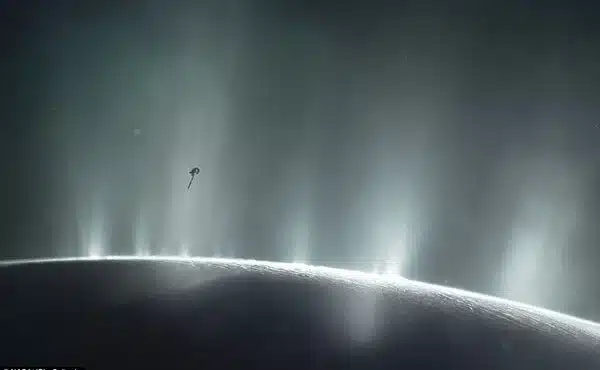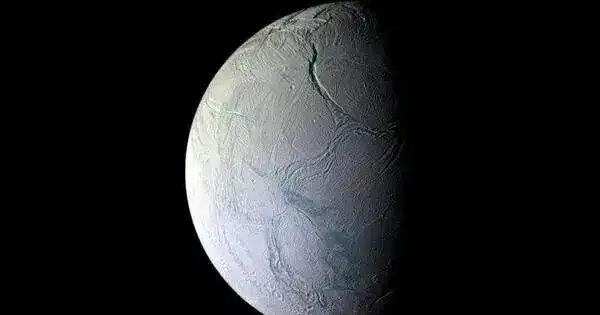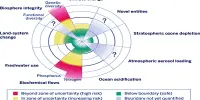At Saturn’s moon Enceladus, scientists uncovered several essential building elements for life. The hunt for extraterrestrial life in our solar system has just gotten a lot more thrilling. Dr. Christopher Glein of the Southwest Research Institute led a team of scientists that discovered new evidence that the deep ocean of Saturn’s moon Enceladus has a vital building element for life.
Using data from NASA’s Cassini mission, the researchers directly found phosphorus in the form of phosphates originating from the moon’s ice-covered global ocean. Cassini spent over 13 years studying Saturn and its rings and moons.
“In 2020 (published in 2022), we used geochemical modeling to predict that phosphorus should be abundant in Enceladus’ ocean,” stated Glein, a world authority on alien oceanography. He is a co-author of a Nature paper that describes this research. “Now, we have found abundant phosphorus in plume ice samples spraying out of the subsurface ocean.”
We found phosphate concentrations at least 100 times higher in the moon’s plume-forming ocean waters than in Earth’s oceans. Using a model to predict the presence of phosphate is one thing, but actually discovering phosphate evidence is incredibly exciting. This is an incredible achievement for astrobiology and a significant step forward in the hunt for life beyond Earth.
Christopher Glein
One of the most important discoveries was the discovery of complex organic molecules, which are carbon-containing chemicals required for life as we know it. Methane, carbon dioxide, and carbon-containing compounds such as formaldehyde were among the organic molecules.
Cassini discovered underlying liquid water on Enceladus and collected samples from a plume of ice grains and gases shooting into space from fractures in the moon’s icy surface. Cassini’s Cosmic Dust Analyzer detected the presence of sodium phosphates in a type of salt-rich ice grains. The team’s observations, together with laboratory analogue research, indicate that phosphorus is abundantly available as phosphates in Enceladus’ ocean.
Phosphorus in the form of phosphates is essential for all living things on Earth. It is required for the formation of DNA and RNA, energy-carrying molecules, cell membranes, bones and teeth in humans and animals, and even the sea’s plankton microbiome. Without phosphates, life as we know it is simply not possible.

“We found phosphate concentrations at least 100 times higher in the moon’s plume-forming ocean waters than in Earth’s oceans,” Glein stated. “Using a model to predict the presence of phosphate is one thing, but actually discovering phosphate evidence is incredibly exciting.” This is an incredible achievement for astrobiology and a significant step forward in the hunt for life beyond Earth.”
One of the most significant discoveries in planetary science in the last 25 years is that worlds with seas beneath an ice surface layer are abundant in our solar system. The ice satellites of the large planets, including as Europa, Titan, and Enceladus, as well as more distant entities like Pluto, are examples of such worlds.
Worlds having surface seas, such as Earth, must stay within a certain range of distances from their host stars in order to maintain temperatures suitable for surface liquid water. Interior ocean worlds, on the other hand, can occur over a considerably greater range of distances, greatly extending the number of livable worlds predicted to exist across the galaxy.
“Geochemical experiments and modeling demonstrate that such high phosphate concentrations result from enhanced phosphate mineral solubility, in Enceladus and possibly other icy ocean worlds in the solar system beyond Jupiter,” added Glein. “With this finding, the ocean of Enceladus is now known to satisfy what is generally considered to be the strictest requirement for life. The next step is clear – we need to go back to Enceladus to see if the habitable ocean is actually inhabited.”














